Robert Siodmak | 1hr 43min

There isn’t a whole lot separating the narrative structures of The Killers and Citizen Kane, with both films seeking to dismantle the mystery of the men who die right at their very start. The friends, colleagues, and lovers they have accumulated throughout their lives each hold a piece of the overall puzzle, and as we trace flashbacks along non-linear paths, unexpected layers of their lives begin to emerge.
Perhaps the biggest difference is that the Swede is almost the inverse of Charles Foster Kane. He does not come from the world of multimillion-dollar corporations and mass media, but boxing and organised crime. He is not smooth and charming in the way a political aspirant might be when speaking to potential voters, but still personable on a much smaller scale when he isn’t losing his temper in fits of paranoia. He stands above virtually everyone else with his broad shoulders and strong physique, exerting a raw, physical energy impressively mustered by Burt Lancaster in his invigorating screen debut.
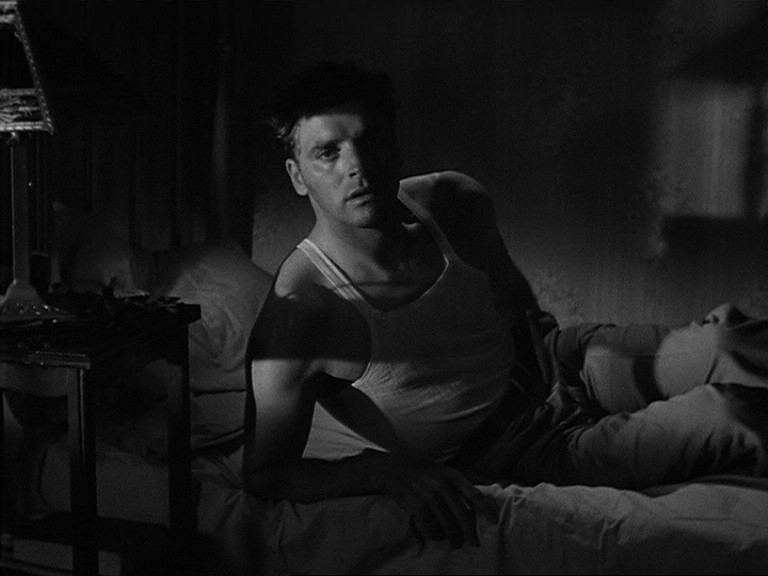
Also unlike Kane, the Swede dies young – assassinated by a pair of hitmen who have tracked him down into a small, rural corner of New Jersey and dispatched him without much struggle. That he so despairingly accepts his fate seems strange to those who knew him, and is even stranger to us when we get to know him ourselves. What ensues is not a search for the truth of a man’s life, but rather an autopsy of his mysterious death, closely studying the circumstances which led him to such a tragic and uncharacteristic end.
Jim Reardon is the insurance investigator we follow through this trail of fragmented clues, played by Edmond O’Brien as a diluted take on Humphrey Bogart’s wise guy screen persona. On paper, Reardon is simply motivated to track down the beneficiary of the Swede’s life insurance, but upon discovering that she is a meek hotel chambermaid who barely even knew him, he is anything but satisfied.
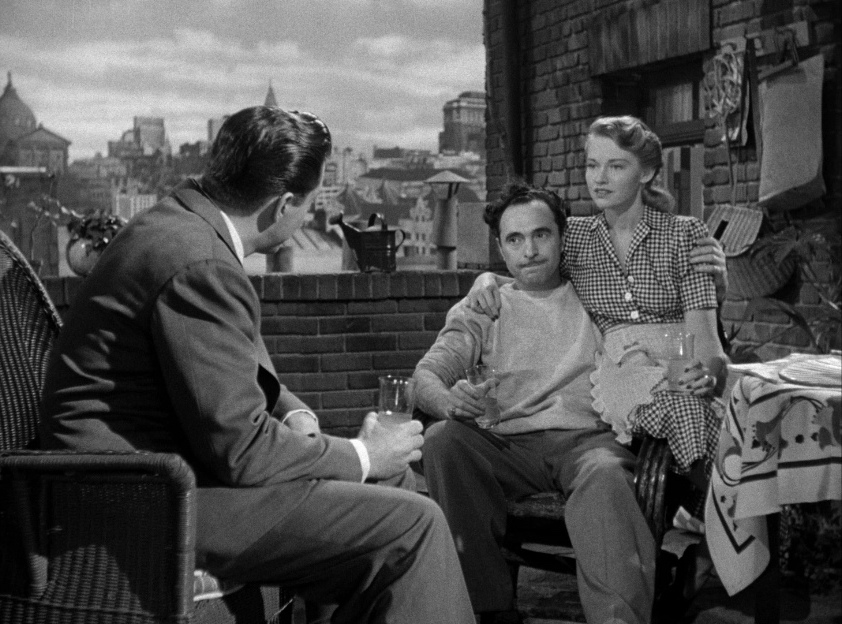
Additionally, the Swede is only one of three titles that he goes by, Reardon soon discovers. Pete Lund is what most people in his local community know him as, while Ole Anderson is the birthname he has been running from ever since leaving his mob days behind. This is only the beginning of a thrilling plot layered with treacherous triple crosses and seductive intrigue though, all revolving around one lonely man doomed by his own fatal, obsessive insecurity.
Robert Siodmak was a director well versed in expressionist filmmaking by the time he got behind the camera on The Killers, and that experience is evident in the shadow-drenched mise-en-scène and piercingly deep focus he skilfully displays here. Even before we move into flashbacks, the astounding 12-minute sequence which opens the film in the town of Brentwood is filled with chiaroscuro lighting, cutting silhouettes out of two men in fedoras and trench coats wandering the dark, empty streets. This is where Ole has taken refuge and kept a low profile as a gas station attendant, but for the time being he is little more then a name floating about in conversation between these suspicious outsiders and the owner of the diner they have come across. Siodmak is patient with his tension, slowly turning up the heat as we recognise the inevitability of their mission, and submitting us to the same fatalistic resignation as Ole before shots are even fired.
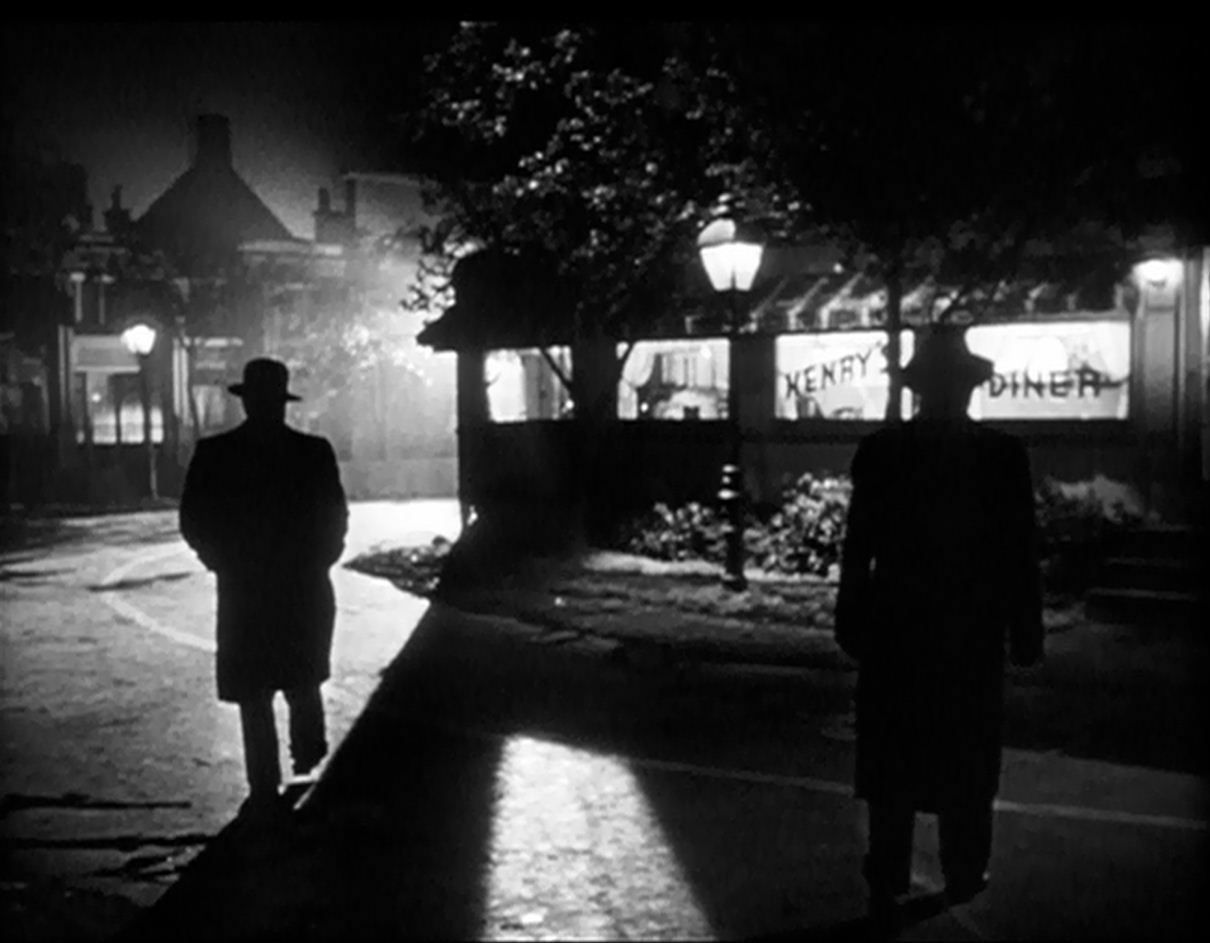
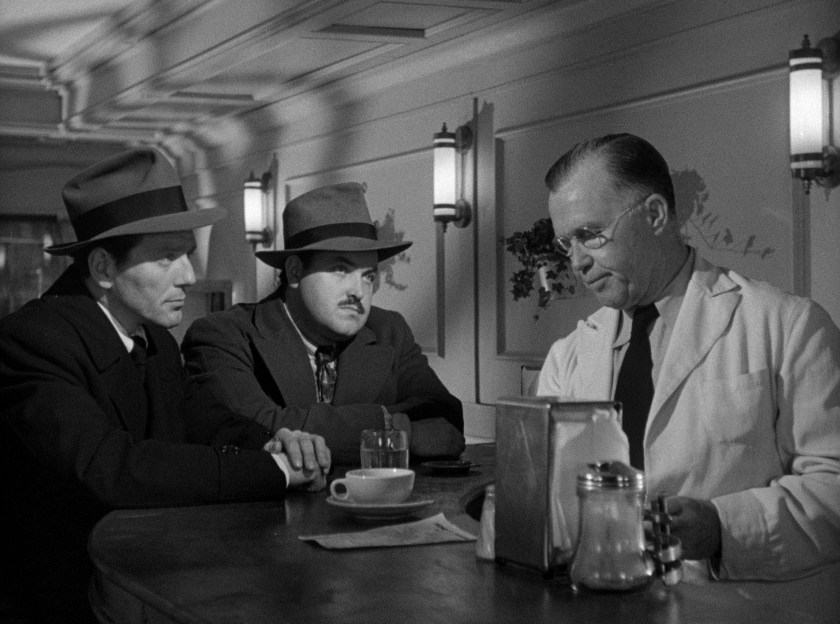
With the foreknowledge of the Swede’s death accompanying us through the subsequent flashbacks, Siodmak often signposts each step that he takes towards it with some inspired visual flourish. Ava Gardner’s duplicitous femme fatale, Kitty Collins, enters the Swede’s life like a magnet, drawing his eyes from across the party while his girlfriend Lilly stands next to him. The three layers of blocking which positions Kitty in the foreground and staggers the two others into the background immaculately distils this love triangle into a single, poignant shot, though Siodmak isn’t done there. A subtle camera movement following Ole into a new position right behind Kitty cuts Lilly out of the frame altogether, all the while his new love interest croons a slow, romantic ballad.
“The more I know of love,
The less I know it…
The more I give to love,
The more I owe it.”
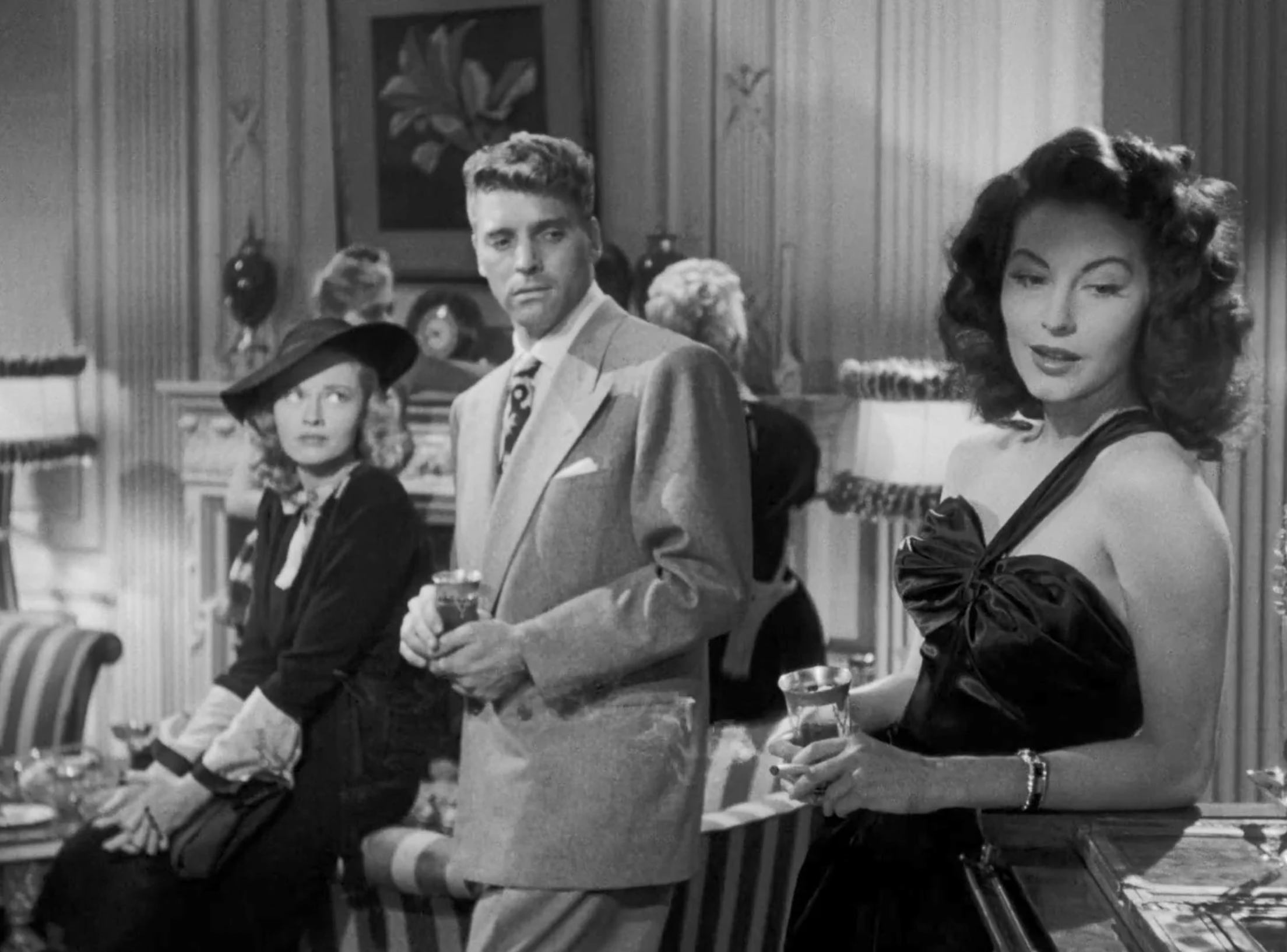

Ole’s boxing career being cut short due to a hand injury may have been out of his control, but when presented with a choice to either follow his friend Lubinsky into the police force or Kitty into a life of crime, the blame comes squarely back on him. Similarly, when he willingly takes part in a sensational robbery orchestrated by mob boss Colfax, Siodmak infuses the scene with a Hitchcockian suspense, expertly navigating the industrial factory through a two-minute crane shot. A voiceover reading about the exploit in a newspaper article details the events as we soar over fences, scale buildings, and follow the bandits’ escape, tracing their movements with a precision equal to their own perfectly choreographed plot.
The more we get to know Ole, the more we recognise the fatal flaws which put him on this road to hell. Siodmak formally lays out his weaknesses in smaller scenes as grounding for his more consequential downfall later on, especially revealing an inherent paranoia when he falsely assumes Colfax is cheating in a game of poker and foolishly attacks him. It seems that Kitty is the only person he does have total faith in, but when he willingly takes the rap for her stolen jewellery in a spur of the moment decision, his recklessness gets the better of him again and lands him in jail. The Killers may have been based on an Ernest Hemingway short story, but Siodmak, Lancaster, and screenwriter Anthony Veiller put in a huge amount of work to develop this character even further into a complex man of quick judgements, foolhardy actions, and perhaps beneath it all, a genuinely good soul.
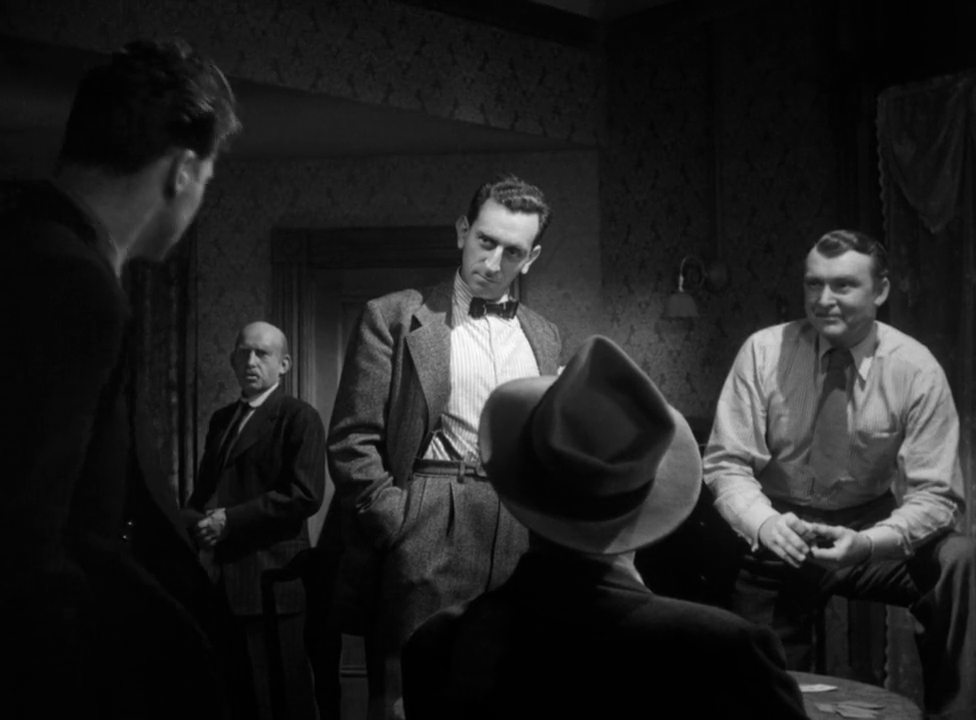

With all of this in mind, we can see how Ole could have gotten out at each step along the way, and simultaneously accept that he was never going to make any other choices than the ones he ultimately commits to. Most significantly, the lie Kitty fabricates that his associates are planning a betrayal sets up the dominoes perfectly, manipulating him into stealing the money from them so that she can run away with it herself. With most of the pieces of Reardon’s puzzle finally in place, the loop that brings the story back to the present day is mostly closed, save for the danger which has moved on from Ole and now attached to our curious investigator.
We are given two big clues that Reardon is in trouble when he eventually meets with Kitty and enters a diner with her. The first is the diner itself, established in the very first scene as a prime spot for hitmen to hunt down targets. The second is Kitty, who has proven herself on numerous occasions to be an untrustworthy figure. Fortunately, Reardon is not fooled so easily by her feigned innocence. Siodmak is skilled with his foreshadowing in this way, but it is also a beautiful piece of bookending he crafts here too, bringing the film back to those two enigmatic assassins who enter these venues of warm hospitality and defile them with violence.
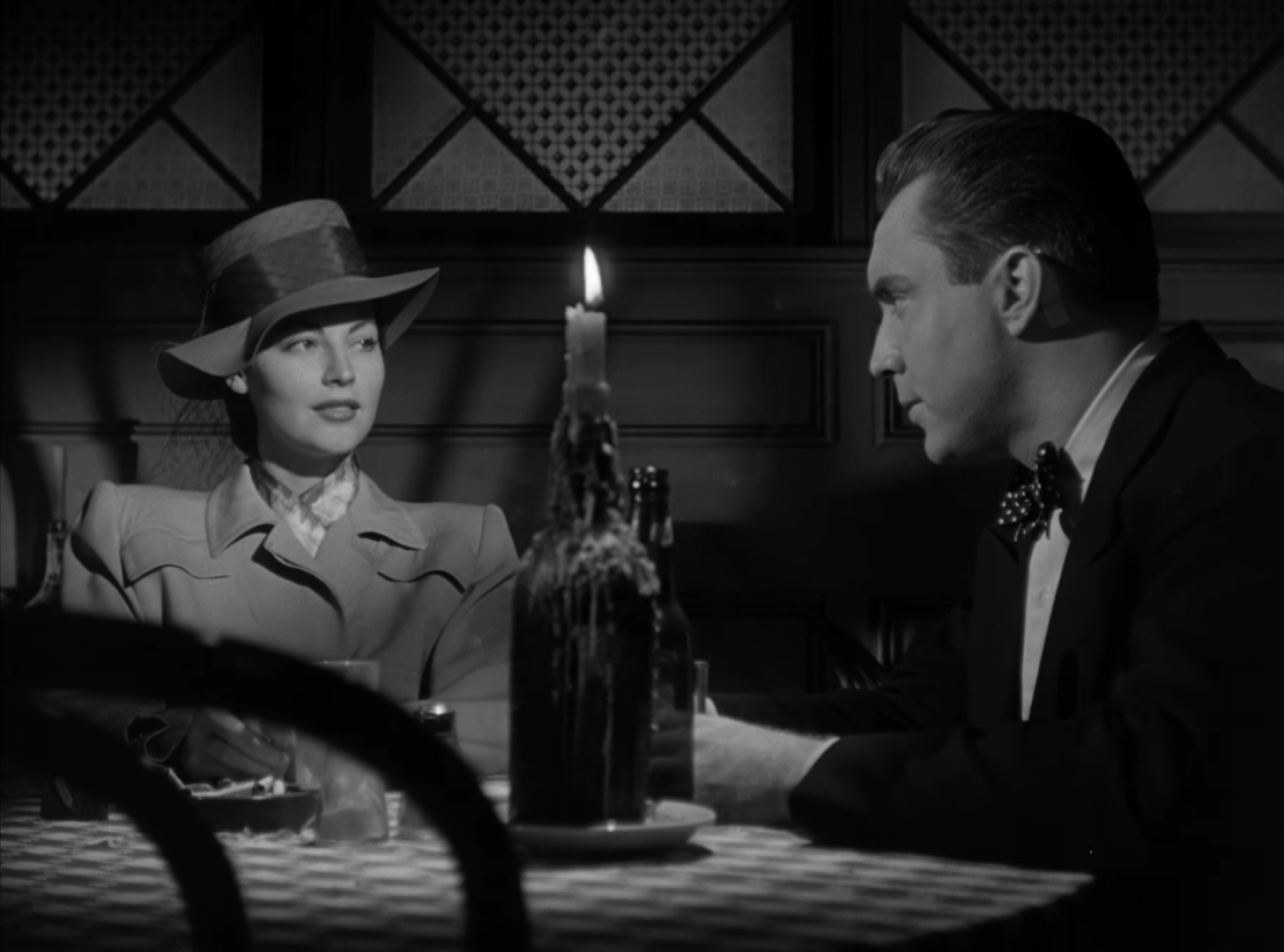
This potent metaphor of corruption pervades Siodmak’s film on every level, as much like the titular killers, Ole too has tainted something pure – his own innocent soul. As we recall those calm final seconds before his demise though, we see a new choice being made. His graceful acceptance of consequences runs in stark contrast to Kitty’s hopeless, desperate begging for Colfax to absolve her of guilt in front of the police. Perhaps his decision was born of a newfound humility, inspired by his time as small-town gas station attendant Pete Lund, or maybe he was simply tired of running. We might get most of the answers we have been looking for in this splintered collection of memories and clues, and yet even after all this, the mystery of the man’s uncharacteristic death remains.
The Killers is not currently available to rent or buy in Australia.
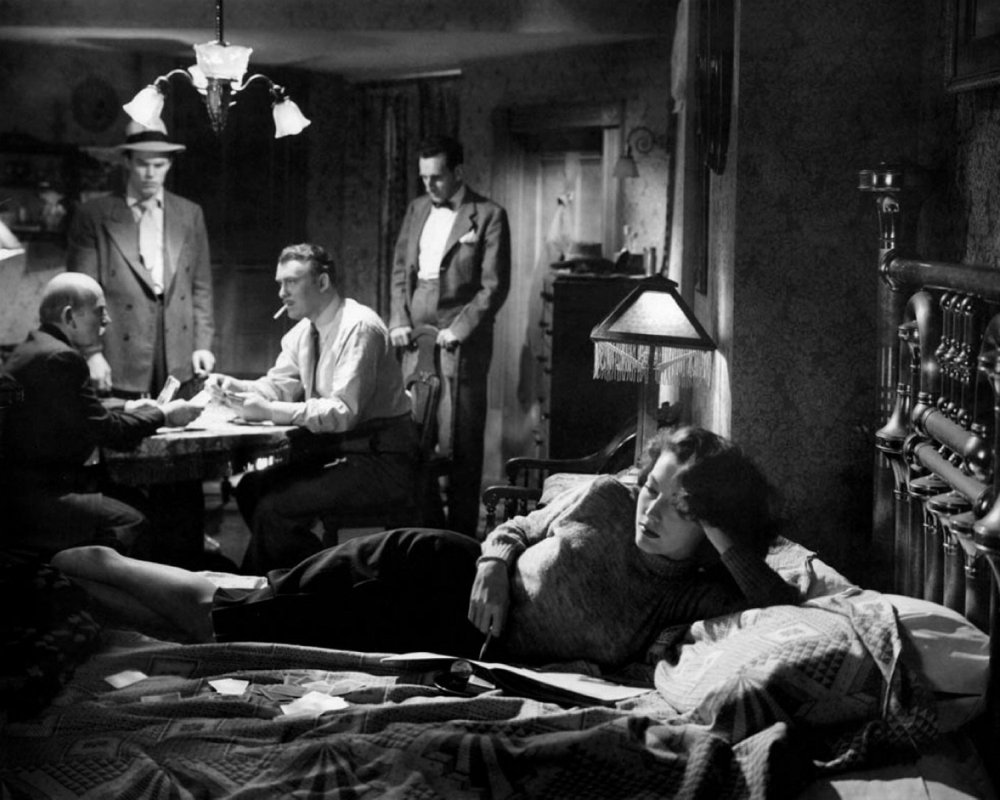


Pingback: The Best Films of the 1940s Decade – Scene by Green
Pingback: The 50 Best Male Actors of All Time – Scene by Green